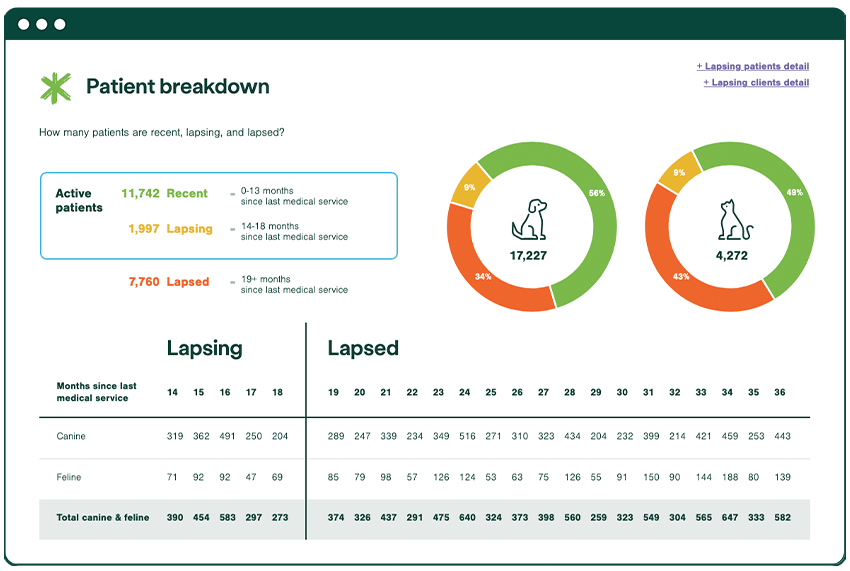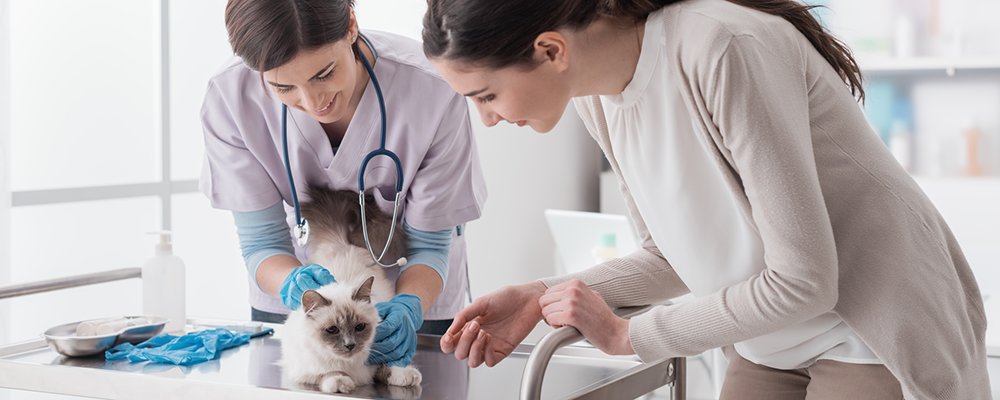According to the 2017-18 edition of the AVMA Pet Ownership and Demographics Sourcebook, more than 31 million U.S households owned cats in 2016, but only 54.3% visited their veterinarian at least once a year — significantly less than dog owners, with 82.8% of households visiting annually.
 If you get Vetsource’s Practice Overview Report, your Active Patient chart probably shows a similar discrepancy. How many active dogs do you have compared to active cats? And why aren’t veterinary practices seeing more cats?
If you get Vetsource’s Practice Overview Report, your Active Patient chart probably shows a similar discrepancy. How many active dogs do you have compared to active cats? And why aren’t veterinary practices seeing more cats?
Many practices lack a cat-friendly atmosphere. If a cat has a negative experience at your practice, so does the owner, and the odds of that client wanting to bring their cat back for any reason decreases with each negative experience.
The American Association of Feline Practitioners created the certified Cat Friendly Practice program for this very reason. This program helps practices make veterinary visits less stressful for cats, their owners, and the veterinary team.
Putting cat-friendly practices to the test
When I was a practice manager in Colorado, I signed up for the program and learned a lot about the special needs of cats, including that the smallest and simplest details can make a difference in the quality of their preventive care.
I had the opportunity to put my learning into action on one particular occasion. A cat had red flags all over his patient file. He was aggressive and only allowed very limited physical examinations in the past. I was scheduled to be the room tech for that appointment and approached the doctor ahead of time, asking if I could pull out all the stops with the cat-friendly techniques I learned. He agreed.
As soon as the cat arrived (in his carrier, thank goodness!), I immediately whisked him and his mother into an exam room where I had deliberately dimmed the lights. Before doing anything else, I covered his carrier with a towel that I had sprayed with Feliway so he could “marinate” for a while.
During this time, I obtained his medical history and determined what vaccines he needed. His mother requested that we also trim his toenails if he would let us. I remember thinking to myself, “Yeah right! Have you seen his file?” but out loud I said, “If he’ll let us, we’ll sure be happy to try.” Then I left the exam room to get the doctor.
Cat-friendly techniques in action
I filled the doctor in on the plan, got everything that we were going to need, and we went back into the examination room. While he was greeting the client, I removed the screws connecting the top of the carrier to the bottom and very slowly slid the top off, allowing the towel to lay on top of the cat so he could feel like he was still hidden and safe. Very slowly, I uncovered each part of the cat so the doctor could examine him, while still keeping him gently wrapped in the towel.
By the end of his visit, he had allowed a complete nose-to-tail physical exam. We delivered the works: scoping his ears and eyes, palpating his abdomen, checking out his teeth, and performing range of motion tests on all four limbs. We even vaccinated him and clipped his nails, all without massive restraint on our part or hissing and scratching on his. This cat received the greatest level of preventive care he’d had in years!
The doctor was so thrilled with how well the appointment had gone that we actually high-fived one another. What was behind our success? We simply put in a little extra effort to slow things down and apply small touches that made a big difference.
Is this program for you?
Should you be a certified Cat Friendly Practice? If your data shows that you’re seeing fewer cat visits than dogs visits, the answer is yes. Clients are certain to appreciate it and, more importantly, your feline patients deserve it.



